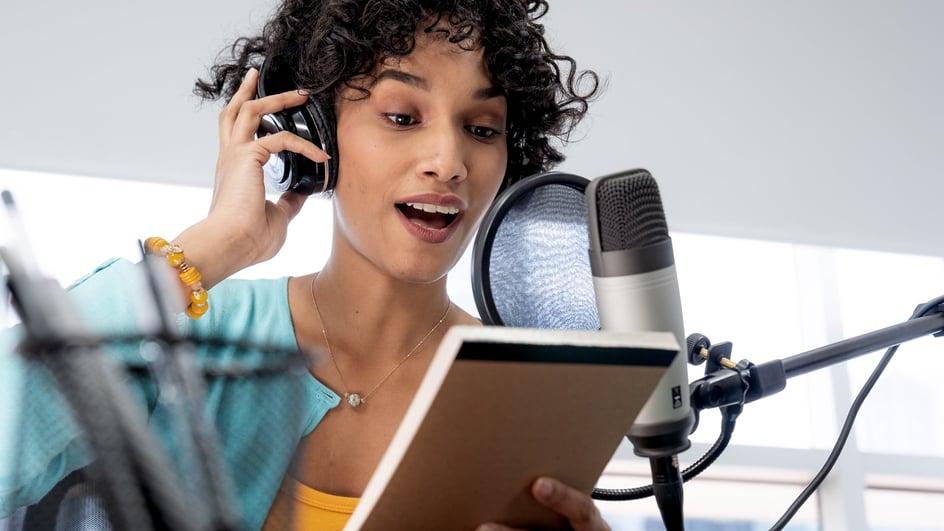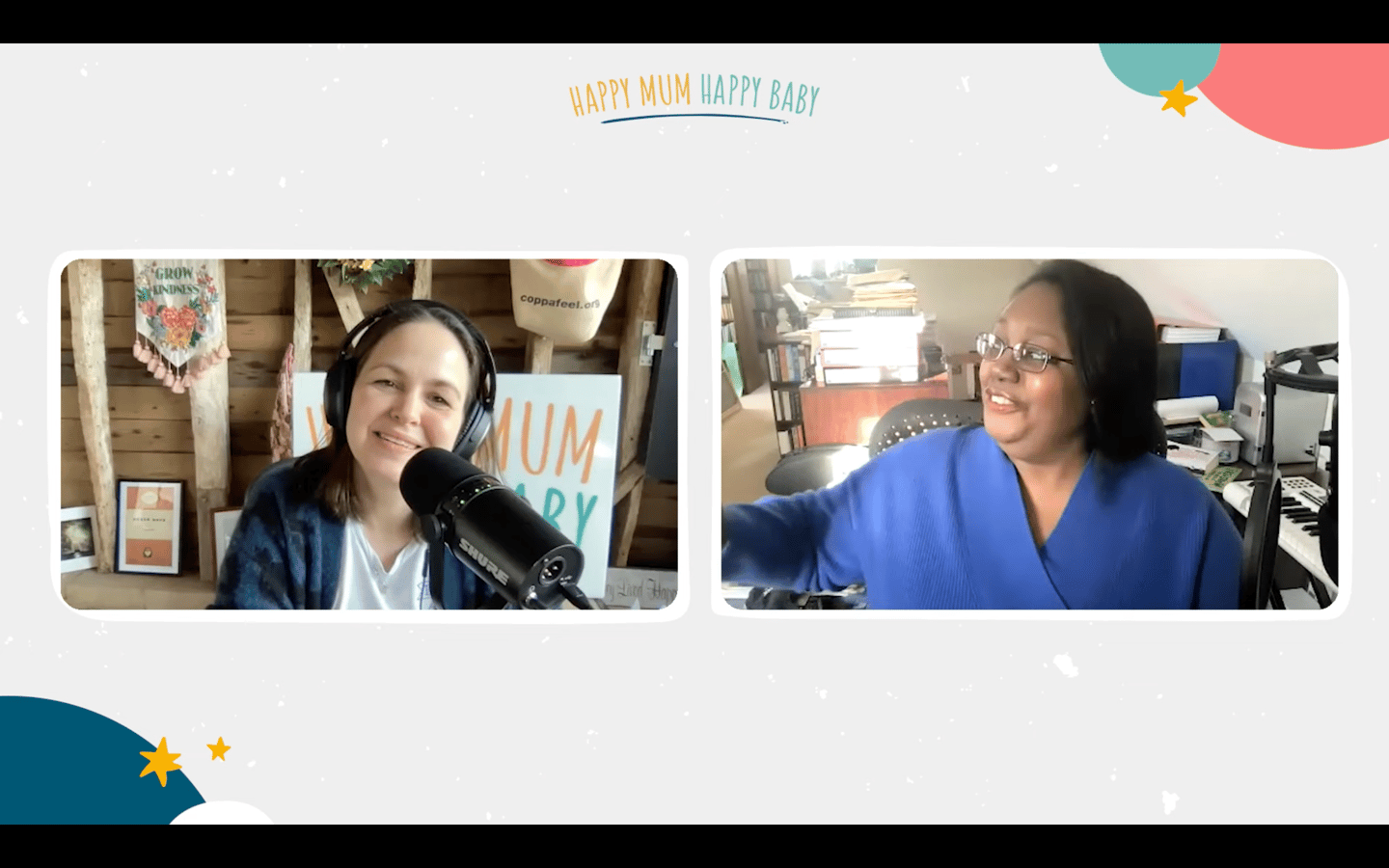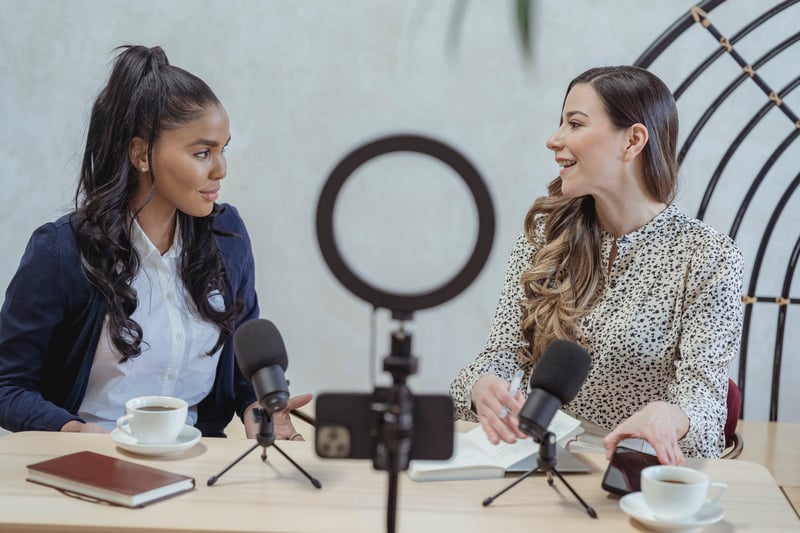3 Simple Ways to Repurpose Your Podcast Content With Video
Soundstripe Team

Nov 13, 2020
Podcasts are a real labour of love. A lot of hard work goes into producing, recording and promoting each episode, so it makes sense to maximise every opportunity you have to share it with the world.
That said, very few podcasters have the time, the team or the tech behind them to spend hours crafting social media graphics and ad campaigns to win new listeners.
The good news is that every time you produce a new podcast episode, you also produce tons of high quality content that you can use to attract, engage and entertain new listeners.
“Repurposing podcast content” means taking a podcast episode and turning it into brand new forms of content. For example, you might create an eBook from a series of transcripts or offer behind-the-scenes video to your Patreon subscribers.
The beauty of repurposing means that you can reach new audiences and grow your podcast without having to constantly create new material. The more juice you squeeze out of an episode, the more ways there are to discover your content and your podcast.
One of the easiest ways to repurpose a podcast is with video. Video is great for 2 reasons:
YouTube is the 2nd largest search engine after Google, and social media sites consistently prioritize video when serving content to users. Creating video as well as audio content will help more people find and enjoy your podcast.
You can save time by recording video at the same time as your podcast audio. Streaming, editing and captioning apps are easy to find and some offer free plans (Descript, Headliner and Subly are all great). And you already have a lot of the equipment you need — a great microphone, software, etc.
So, video is both a practical and an effective way to expand your podcast’s reach. Read on for 3 simple ways to repurpose your podcast content and make the most of every episode!
If you’re thinking about repurposing your podcast with video, starting a YouTube channel is the most natural place to start. More video is consumed on YouTube than any other site, and as a powerful search engine, it’s pretty easy to achieve steady growth as long as you play to its algorithm.
Before you put your podcast on YouTube, you need to think about if the format of your show will attract viewers. After all, there’s little point in creating video if no one wants to watch it!
For example, if you co-host your podcast, conduct interviews or have guests on regularly, your podcast will already have a natural, conversational dynamic that people will want to watch.
 Giovanna Fletcher’s podcast, Happy Mum Happy Baby, is filmed for YouTube in a casual studio setting.
Giovanna Fletcher’s podcast, Happy Mum Happy Baby, is filmed for YouTube in a casual studio setting.
If you host your podcast solo, or create episodes that are heavily scripted or narrative-driven, you’ll want to put more thought into how and whether you should repurpose your podcast for YouTube.
That’s not to say you can’t create video from narrative podcasts! This kind of content will take a bit more production to make work, but all is not lost. Soundstripe can help you up your production value and tell a visual story using sound effects, stock video and music.
Another factor to consider is how often you’ll post to YouTube. If you create new podcast episodes a few times a week, that’s a lot of video to edit and upload! The whole point of repurposing is not creating more work for yourself. So avoid overloading your to-do list by being selective about which episodes you repurpose. This way, you’ll focus on quality, not quantity.
Live streams are a brilliant way to stir up audience engagement and get the most out of your planned episode content.
1. Understand the YouTube algorithm.
Optimizing your videos for YouTube's search gives your video the best chance at being discovered. Over time, use your channel analytics to identify your most-viewed videos and where your viewers are dropping off.
2. Make it easy for viewers to find the content they want.
Do some keyword research to find the best phrases to include in your tags, titles, and descriptions. Add chapter markers to help people navigate your video more easily.
3. Include strong calls to action.
Make sure to include links back to your podcast website or subscription page to encourage people to listen and subscribe.
Live streams are a brilliant way to stir up audience engagement and get the most out of your planned episode content.
Fans love live streams because they offer live and direct access to you as well as your community of listeners. You can answer questions, interact with people and let fans know what goes into making a podcast episode.
Whatever you choose to do, live streaming helps build a strong sense of community amongst loyal fans and subscribers, and provides a warm welcome for more casual listeners too.
 Live streaming with guests is a great way to open up a wide conversation between you, your guests, and your listeners.
Live streaming with guests is a great way to open up a wide conversation between you, your guests, and your listeners.
Live streams are useful for making money from your podcast, too.
Some podcasters offer live AMAs, Q&As or guest interviews as exclusive ‘behind-the-scenes’ content to paid subscribers. All this provides extra value for fans and only takes a little more time behind the mic for you.
Just include a call to action at the end of your podcast episode, asking listeners to submit questions and where to find the live stream. Easy!
Want to run a live stream for your podcast? All social media platforms offer some form of live stream feature nowadays, so wherever your audience hangs out, you’ll be able to run a successful stream at the same time as recording your audio.
All you’ll need to do is give your listeners a heads up that you plan to go live, and where to find the stream. You can do this a few days ahead of time by adding a reminder to the end of an episode, sending an email or sharing it over social media.
The final way to repurpose your podcast is to create shareable video content for use on social media. There are lots of options for doing this, such as sharing audiogrammes, clipping up a recorded video or live stream, or adding to your Stories.
All these tactics will help catch the attention of casual scrollers and put your content on their radar. You probably won’t win tons of new listeners this way, but that’s not the goal here: no one jumps from seeing a video on LinkedIn to subscribing to your podcast straight away.
Instead, you should focus on creating short, engaging and accessible clips that convey the subject and tone of your episodes. If you’re featuring a guest, lead with a juicy clip to pique your listener’s interest. If your podcast is narrative led, try to create atmosphere and jeopardy with a cliffhanger, question or an intriguing sound effect.
Whatever your podcast is about, don’t forget to caption your video! 92% of US consumers watch video with the sound off, so adding subtitles to your videos is an absolute must for accessibility as well as view duration. Apps like Descript, Subly and Headliner can help you transcribe, edit and add in colourful captions to create repurposed social media content in a flash.
In this guide, we’ve talked through 3 easy ways to repurpose your podcast using video. While video is a natural next step for most podcasters, it’s by no means the only option you have when it comes to saving time, expanding your reach and promoting your content.
Whatever medium or method you choose, repurposing is a guaranteed way to reach new audiences without having to spend hours creating fresh content. Instead, you’ll be able to channel the time and effort spent making podcast episodes into your wider podcasting goals.
About the author:
Rachel is the marketing coordinator at Captivate, a podcast hosting, analytics and marketing platform. Rachel works closely with independent creators to drive education and innovation in the podcasting community by creating practical resources and guides like this one.